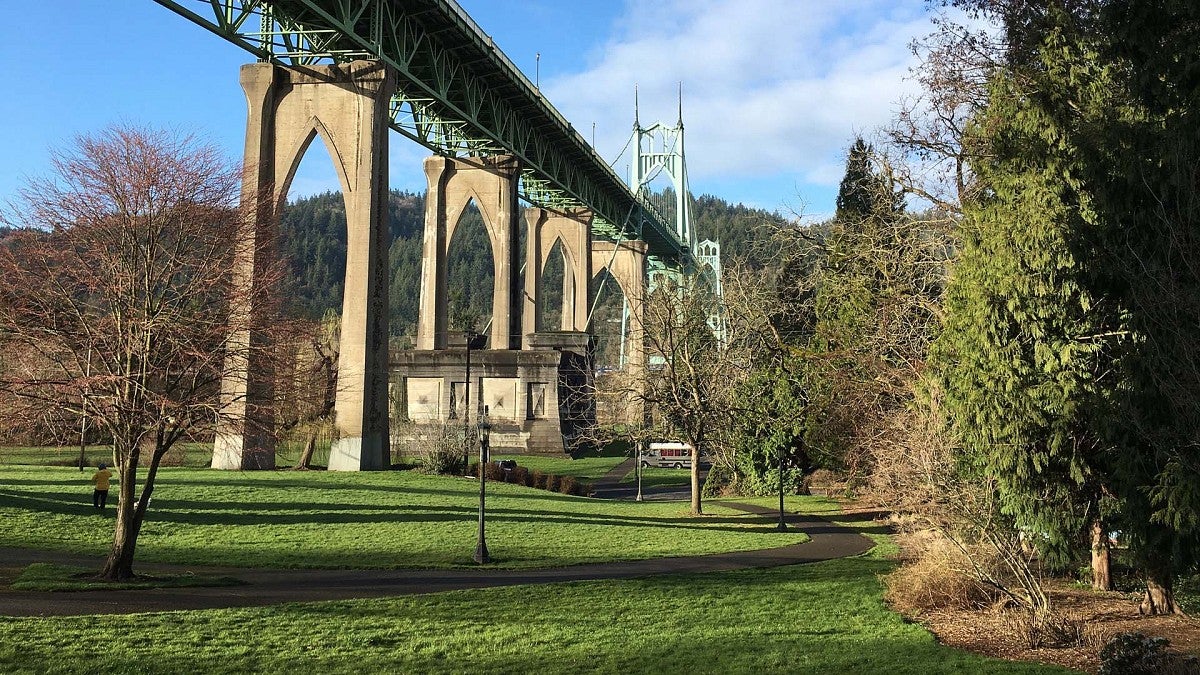City planners and policy makers have better tools for making cities healthier and more equitable, thanks to new University of Oregon research.
Tree canopies, parks and vegetation offer city dwellers more than aesthetic value. A growing body of research indicates they also provide tangible health benefits. But studies also reveal urban green space is often distributed unequally. Disparities in access and exposure to natural amenities often reflect broader environmental justice and health equity issues.
Using Portland as a case study, a team of UO researchers have developed a more comprehensive way to evaluate urban green space equity. The study was published May 21 in the journal land.
By evaluating factors like tree coverage, park quality and urban vegetation, they created a series of overlapping data maps that demonstrate how Portland’s natural amenities correlate with race, ethnicity, income and education.
It’s the first study of its kind to include park quality, park availability and green cover in the same analysis, said Evan Elderbrock, a former UO graduate student who led the project as part of his doctoral work in the UO’s College of Design.
The approach can be a model for helping other municipal governments pinpoint problem areas, develop solutions rooted in data and make the most of scarce resources. Ultimately, the team hopes it will help curb environmental injustice, promote health and save lives.
More than half the world’s people live in cities, Elderbrock said. And the global urban population is projected to increase proportionally through at least 2050.
“Urban environments have been linked to extreme heat, air pollution, physical inactivity and other risk factors for illness and premature mortality,” he said. “Green space mitigates these public health concerns and improve lives.”
As expected, the research revealed some of the same inequities found in many U.S. cities. But what mattered most was how Elderbrock and his colleagues did the research and how other cities can put those research methods to work.
The power of this new planning toolbox stems from its multifaceted strategy.
For his Portland project, Elderbrock combined multiple kinds of data to create one omnibus model that identifies where disparities are located. This approach provides a more comprehensive, precise picture than past attempts to quantify urban green space inequity.
Creating a municipal grid comprised of many overlapping information layers revealed useful correlations and connections, Elderbrock found. Those specific insights will help cities solve problems more effectively.
From January to March 2021, he visited every park, natural area, cemetery, golf course and public schoolyard in the Portland city limits. He assigned scores for accessibility, amenities, usability and more.
In addition to the field research, Elderbrock obtained and analyzed vast datasets. Then, he combined all these variables into one big model — a sort of ecological, ethnographic X-ray of Portland.
Elderbrock also used satellite images showing reflection, transmission and absorption of the sun’s near-infrared light. That radiation, just outside the visible spectrum, shows the health of living plants.
To measure street level greenness, he evaluated 49,362 locations using Google Street View to calculate the ratio of green to nongreen pixels. Portland’s trees and lawns are green during certain times of year, and not always at the same time. Those discrepancies were factored in.
Although planting trees on private land would help, his research indicates the greatest impact would come from planting trees in Portland’s right-of-way zones such as sidewalks, medians and planting strips. The study also identified 47 priority locations to consider for tree canopy expansion.
Elderbrock emphasizes that the data only represents a first step. Residents of underserved neighborhoods must be included in the planning process to help avoid unintended consequences.
For example, new parks and trees may inadvertently lead to gentrification. The key, he said, is to start with ideas rooted in data, then work with communities. While working to promote environmental justice, cities should also follow a process that is just and inclusive.


